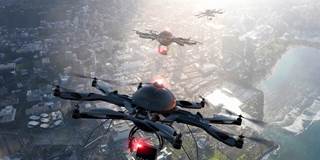The dream of personal aerial transport appears tantalizingly within reach, as investors from Silicon Valley to Dubai vow to deliver the future of urban mobility. But rather than embracing that vision, policymakers should consider why flying cars are not only unpractical, but also unnecessary.
BOSTON – Few pieces of modern hardware have inspired as much excitement as the drone. While nonmilitary unmanned aerial vehicles (UAVs) were initially marketed as purely recreational gadgets, it has not taken long for entrepreneurs and industrial giants to seize on the endless possibilities they offer. Annual sales in the United States are expected to reach seven million units by 2020, and many are already predicting a future in which drones reshape our cities – through remote delivery of goods, airborne surveillance, or as yet unforeseen applications.

BOSTON – Few pieces of modern hardware have inspired as much excitement as the drone. While nonmilitary unmanned aerial vehicles (UAVs) were initially marketed as purely recreational gadgets, it has not taken long for entrepreneurs and industrial giants to seize on the endless possibilities they offer. Annual sales in the United States are expected to reach seven million units by 2020, and many are already predicting a future in which drones reshape our cities – through remote delivery of goods, airborne surveillance, or as yet unforeseen applications.